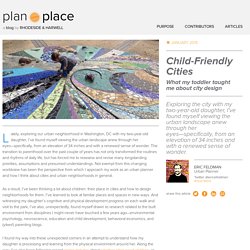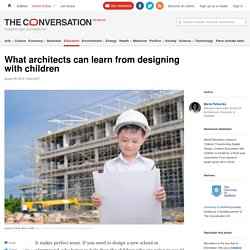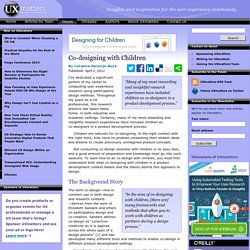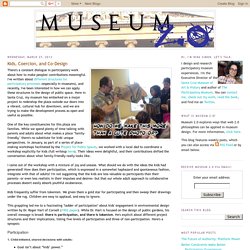

A Kid's Guide to Building Great Communities. Child-Friendly Cities. Lately, exploring our urban neighborhood in Washington, DC with my two-year-old daughter, I’ve found myself viewing the urban landscape anew through her eyes—specifically, from an elevation of 34 inches and with a renewed sense of wonder.

The transition to parenthood over the past couple of years has not only transformed the routines and rhythms of daily life, but has forced me to reassess and revise many longstanding priorities, assumptions and presumed understandings. Not exempt from this changing worldview has been the perspective from which I approach my work as an urban planner and how I think about cities and urban neighborhoods in general.
As a result, I’ve been thinking a lot about children: their place in cities and how to design neighborhoods for them. I’ve learned to look at familiar places and spaces in new ways. I found my way into these unexpected corners in an attempt to understand how my daughter is processing and learning from the physical environment around her. 1. 2. Our Children's Cities: The Logic & Beauty of a Child-Centered Civilization by Jason McLennan. We know a lot about the ideal environment for a happy whale or a happy mountain gorilla.

We’re far less clear about what constitutes an ideal environment for a happy human being. One common measure for how clean a mountain stream, is to look for trout. If you find the trout, the habitat is healthy. It’s the same way with children in a city. Children are a kind of indicator species. Change is coming to our cities in the next 10-20 years, whether or not our culture is ready for it. We exchanged a sense of community for take-out and parking lots. During the post-World War II era we redefined and recreated communities of all sizes to support the transition to an automobile age within the span of only three decades. That we’ll remake civilization is guaranteed—how we’ll do it is the only question. How do we begin to create a future that brings out the best of humanity and safeguards the planet’s fragile ecosystems? After all, we’ve done this before.
Meanwhile, suburban enclaves thrived. Munisa K (@munisak16) Children as Architects. What architects can learn from designing with children. It makes perfect sense.

If you need to design a new school or playground, who better to help than the children who are going to use it? Gradually, more architects and landscape designers are bringing young people into the design process. Now a new study has looked at what architects learn from children about how to break down their own creative barriers. As one architect put it, children can: “bring an energy, an imagination, an honesty, a moodiness sometimes which I quite like”. The value of children’s participation in design has been acknowledged in research studies since the 1960s and 1970s. But until now little research has focused on the impact of children’s ideas on the design process, or on the architects themselves. Now half-way through the research project, we have completed two case studies and surveyed 16 architects and landscape architects who have worked with children aged one to 18.
Creative detours Losing control But it is not always a totally rosy process. Co-designing with Children. By Catalina Naranjo-Bock Published: April 2, 2012 “Many of my most rewarding and insightful research experiences have included children as co-designers in a product development process.”

I’ve dedicated a significant portion of my career to conducting user experience research using participatory design methods. Throughout my years as a UX professional, this research practice has taken many forms. in both industrial and academic settings. Kids, Coercion, and Co-Design. There's a constant dialogue in participatory work about how to make peoples' contributions meaningful.

I've written about different structures for participatory processes (especially in museums), and recently, I've been interested in how we can apply these structures to the design of public space. Here in Santa Cruz, my museum has embarked on a major project to redevelop the plaza outside our doors into a vibrant, cultural hub for downtown, and we are trying to make the development process as open and useful as possible. One of the key constituencies for this plaza are families.
While we spend plenty of time talking with parents and adults about what makes a place "family-friendly," there's no substitute for kids' unique perspectives. In January, as part of a series of place-making workshops facilitated by the Project for Public Spaces, we worked with a local dad to coordinate a workshop explicitly for kids (full writeup here). Kids frequently suffer from tokenism. Participation 1. 2.